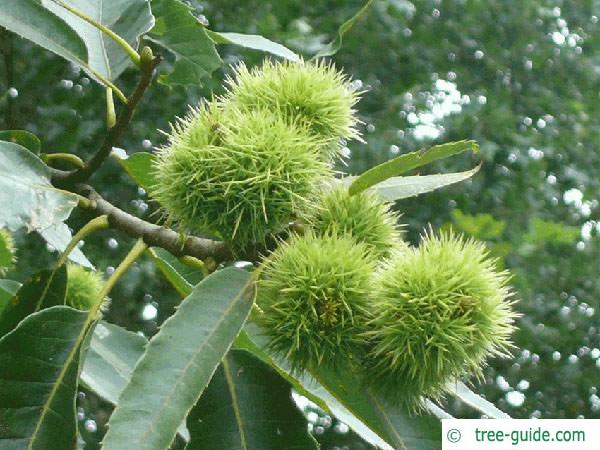Chestnuts have long been a staple in both nature and culture, offering not only sustenance but also symbolic meaning. Whether you’re looking to understand the botanical definition of a chestnut or exploring its role in various traditions, this guide provides a comprehensive overview of what a chestnut is.

Understanding the Botanical Definition of a Chestnut

At its core, a chestnut refers to the fruit of trees belonging to the genus Castanea. These are deciduous trees known for their edible nuts, which are encased in spiny burs. The term “chestnut” can also refer to the tree itself, particularly when discussing its ecological and economic significance.
Key Features of Chestnut Trees
- Leaves: Most chestnut species have toothed, lance-shaped leaves that turn vibrant shades of red and gold in the fall.
- Fruits: The nuts are enclosed in a spiny husk, commonly referred to as a “bur.” Each bur typically contains one to seven nuts.
- Bark: Mature chestnut trees often have furrowed or deeply grooved bark.
Common Species of Chestnut Trees
- American Chestnut (Castanea dentata)
- Once dominant in eastern North America, this species has been nearly wiped out by chestnut blight.
- Known for its tall stature and valuable timber.
- European Chestnut (Castanea sativa)
- Widely cultivated in Europe and Asia for its sweet, edible nuts.
- Often called the “sweet chestnut.”
- Chinese Chestnut (Castanea mollissima)
- Resistant to blight, this species is commonly grown for its nutritious nuts.
- Japanese Chestnut (Castanea crenata)
- Smaller in size compared to other species, it is prized for its flavorful nuts.
The Culinary and Nutritional Value of Chestnuts

Chestnuts are more than just a seasonal treat—they are a nutrient-dense food source. Unlike many other nuts, chestnuts are low in fat and high in carbohydrates, making them a unique option for those seeking a natural energy boost.
How Are Chestnuts Used?
- Roasting: One of the most popular ways to enjoy chestnuts, especially during the holiday season.
- Baking: Ground chestnuts can be used as a gluten-free flour alternative.
- Soups and Desserts: Chestnuts are a key ingredient in dishes like chestnut soup and chestnut cake.
Nutritional Benefits
- Rich in Vitamin C: Chestnuts are one of the few nuts high in vitamin C.
- High in Fiber: They support digestive health and help regulate blood sugar levels.
- Antioxidants: Contain compounds that may reduce inflammation and protect against chronic diseases.
Cultural and Symbolic Meanings of Chestnuts

Beyond their practical uses, chestnuts hold deep cultural significance in many societies. From folklore to modern symbolism, the chestnut tree and its nuts have played a meaningful role throughout history.
Folklore and Traditions
- In European traditions, chestnut trees were often planted near homes to bring good luck and protection.
- In Chinese culture, chestnuts symbolize fertility and are associated with marriage blessings.
- In holiday celebrations, roasting chestnuts is a common activity, especially during the fall and winter months.
Metaphorical Use
The phrase “an old chestnut” is often used to describe a cliché or a well-worn story. This metaphor originates from 19th-century British theater, where a character would repeat the same tale at social gatherings, much like how chestnuts were repeatedly offered at events.
Environmental and Ecological Importance
Chestnut trees play a vital role in ecosystems, providing food and habitat for wildlife. Their ability to thrive in various climates makes them an important part of reforestation efforts and sustainable agriculture.
Role in Biodiversity
- Wildlife Food Source: Squirrels, deer, and birds rely on chestnuts for nourishment.
- Soil Health: Chestnut trees contribute to soil enrichment through leaf litter and root systems.
Conservation Efforts
Due to threats like chestnut blight, conservationists are working to restore native chestnut populations. Hybridization with blight-resistant species is one approach being explored to revive the American chestnut.
Conclusion: Embracing the Richness of Chestnuts
From their botanical features to their culinary and cultural significance, chestnuts offer a wealth of value. Whether you’re enjoying a warm cup of chestnut soup, admiring the fall foliage of a chestnut tree, or learning about their historical importance, there’s always something new to discover about these remarkable nuts.
As we continue to explore the world around us, understanding the definition and meaning of a chestnut reminds us of the deep connections between nature, culture, and everyday life.
Author: Emily Carter
Title/Role: Nature and Culture Writer
Credentials: With over a decade of experience in environmental journalism, Emily focuses on the intersection of ecology, agriculture, and cultural heritage. Her work has appeared in major publications including National Geographic and The Guardian.
Profile Link: https://www.emilycarter.com
Sources:
– Encyclopedia Britannica – Chestnut
– USDA Forest Service – Chestnut Trees
– The New York Times – Chestnut Revival Efforts
Internal Links:
– Understanding Tree Species
– Edible Nuts and Their Uses
– Cultural Significance of Plants
Call to Action: Stay updated with the latest news on plants, their uses, and their impact on our world. Explore today’s headlines on nature and sustainability.










More Stories
What is an Accord? Understanding the Definition and Usage
US Trending News: What You Need to Know About Alex Smith’s Leg Injury and Recovery
Alex Smith Leg Injury: Updates, Recovery, and Impact on His Career